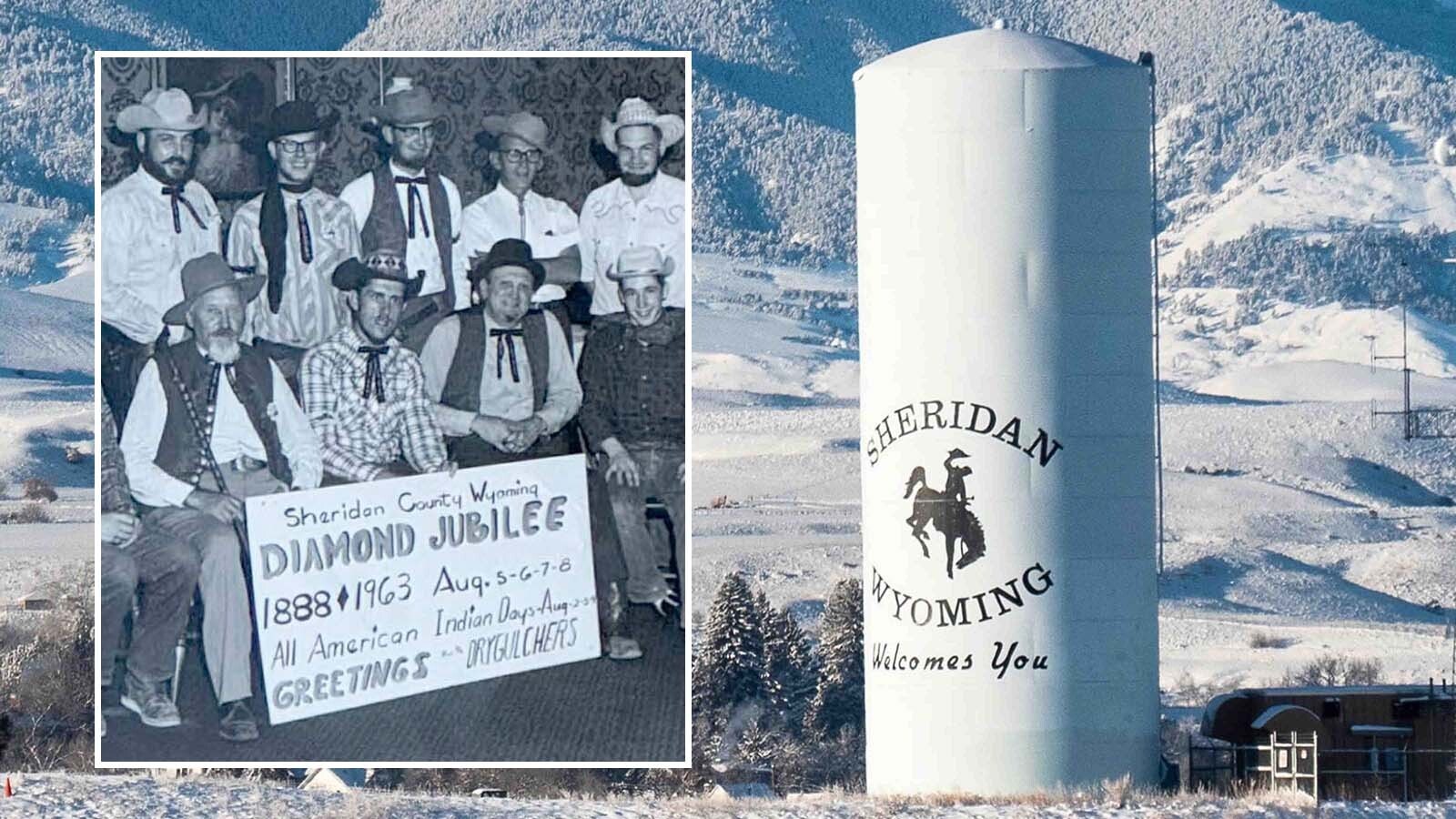A 29-mile trek along the historic Wyoming Mormon Trail, pushing or pulling loaded handcarts across some of the most starkly beautiful and daunting landscapes the state has to offer, gives a new appreciation for the pioneers who traveled hundreds of miles to the West, Lander resident Lloyd Larsen said.
After a decade-long lull, a key section of the trail was recently fully reopened. It runs between the Sixth Crossing at Sweetwater Station, up over Rocky Ridge and into Rock Creek Hollow near Lander.
Doing it the way that members of The Church of Jesus Christ of Latter-day Saints (LDS) did in the 1800s — on foot and pushing heavy handcarts, it takes two days to complete the 29 miles.
Larsen is a member of one of the Lander wards of the Riverton LDS Stake of the church. Some of his ancestors trekked along the Wyoming Mormon Trail during the LDS migrations from the Midwest to what is now Salt Lake City.
From the 1840s to the 1860s, roughly 70,000 LDS pioneers made the journey.
Larsen in years past has walked the Sixth Crossing to the Rock Creek Hollow section.
He told Cowboy State Daily that he’s thrilled that the historically significant section of the trail is fully open again.
Not Just For Church Members
The trek is well worth it for anybody who appreciates Wyoming’s history and vast landscapes, he said. And for the LDS faithful, it carries profound significance.
“It helps us, as Latter-day Saints, reflect on the challenges that we have today and realize that our challenges are not new and unique to those who came before us,” he said.
He likened the westward journey of the LDS church members to that of the pilgrims who left England and ended up at Plymouth Rock in the New World.
“They wanted the ability to worship according to the dictates of their own conscience,” Larsen said.
Recounting A Harsh Journey
During LDS westward journeys of the 1800s, the faithful traveled in large companies. Some used wagons, but many made the journey on foot, pushing handcarts.
“When they arrived in the Salt Lake Valley, those in the handcart companies were in better health than those who came in wagons, because they were exercising every day the entire way,” Larsen said.
The 29-mile section is of special significance because it retraces the brutally hard circumstances of the Willie and Martin handcart companies in 1856.
The roughly 400 LDS pioneers were hit with a harsh early winter, and conditions became nearly unbearable.
At times, they had to get by on nothing more than a quarter ounce of flour each day, and many died, Larsen said.
When word of their plight got to Brigham Young, then the leader of the LDS Church, he sent rescue wagons.
“They were saved. It ended much differently than the journey of the Donner Party,” Larsen said.
He was referencing the horrific fate of a party of travelers trying to reach California, who became stranded in the Sierra Nevada Mountains during the winter of 1846-1847.
According to journals and other historical records, members of the Donner party resorted to cannibalism.
Long Lull Ends
That historically pivotal 29-mile section of the Wyoming Mormon Trail runs through Bureau of Land Management parcels, as well as state of Wyoming lands and private property.
Jurisdictional and logistical complications made it difficult to schedule treks. In 2020, because of the COVID-19 pandemic, the LDS Church essentially shut down the full two-day journeys on other parts of the trail, Larsen said.
Most people took only day treks out from Sweetwater Station and back again.
COVID restrictions were eventually lifted, and a re-routing of some of the trail resolved jurisdictional complications.
The LDS church and the BLM worked out ways to “allow this activity, this really grand activity (of reenacting the treks) to happen, and still protect the environment,” Larsen said.
This summer, the trail became fully active again.
Earlier this month, about 150 LDS church members made the full trek, many of them dressed in authentic period clothing and pushing historically accurate carts, the Deseret News reported.
Not For The Faint Of Heart
Larsen said trekkers can stay in a campground along the route to rest for the night and break the journey into two days.
However, to protect the environment and historical authenticity, travelers should expect bare-bones basic hiking.
“It’s not for the faint of heart,” Larsen said. “It’s as much mental as it is physical.”
For the faithful, the humbling affirmation that comes with each step and every mile is worth it, he said.
“When you’re walking along the trail, you have to say to yourself, ‘Why did these people do this?’” he said. “And you have to say, ‘Do I have the same conviction? Am I made of the same mettle?’”
Mark Heinz can be reached at mark@cowboystatedaily.com.









